The AHS Blog

Just so you know how rich I am
This post was written by David Thompson
Today some people wear expensive watches partly to demonstrate their wealth. They either sparkle with diamonds or they impress with their complexity of mechanical magnificence. You might think that this is a new idea, but in fact this tradition goes back centuries to when the first watches were made in the early part of the 16th century.
An interesting example of this comes from the title page of Sir John Harrington’s translation of Orlando Furioso, (The Frenzy of Orlando, an Italian epic poem by Ludovico Ariosto first published in 1516.) Harrington’s translation, which appeared in 1591 was the first in English. The story contains politics, war, religion and unrequited love as well as fantasy and consists of forty-six eight-line verses in rhyme – quite a challenge for the translator.
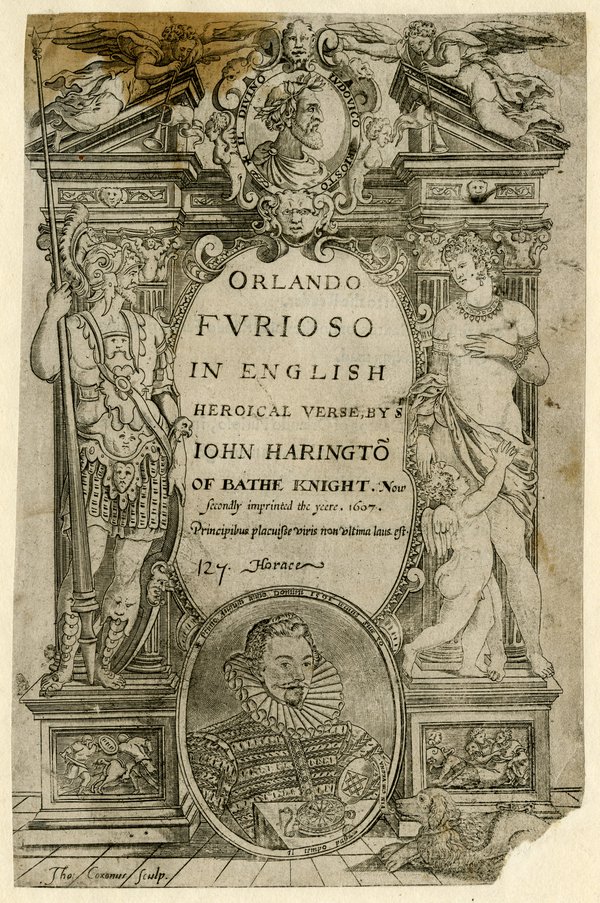
On the title page of the work is an engraved portrait of Sir John proudly sporting a fine oval-cased watch with the Harrington shield of arms engraved inside the cover. The portrait is dated 1st August 1591 and bears the inscription ‘Il tempo passa’ and the legend that Sir John was thirty years old when the portrait was taken – time passes and this is a moment in the life of the author.
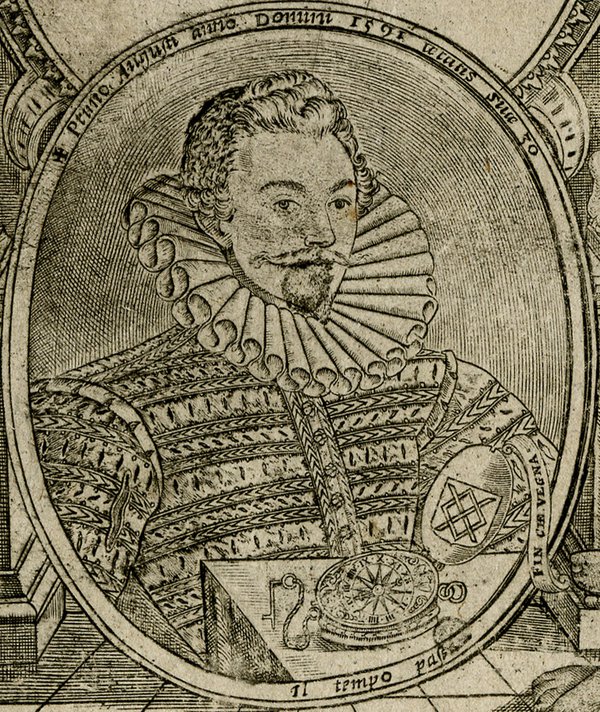
A similar watch can be found in the British Museum collections, made by an immigrant Flemish worker in London, Ghylis van Gheele and here too, the watch sports a shield of arms, This time of the Giffard family of St. Andrew’s Abbey in Northamptonshire.

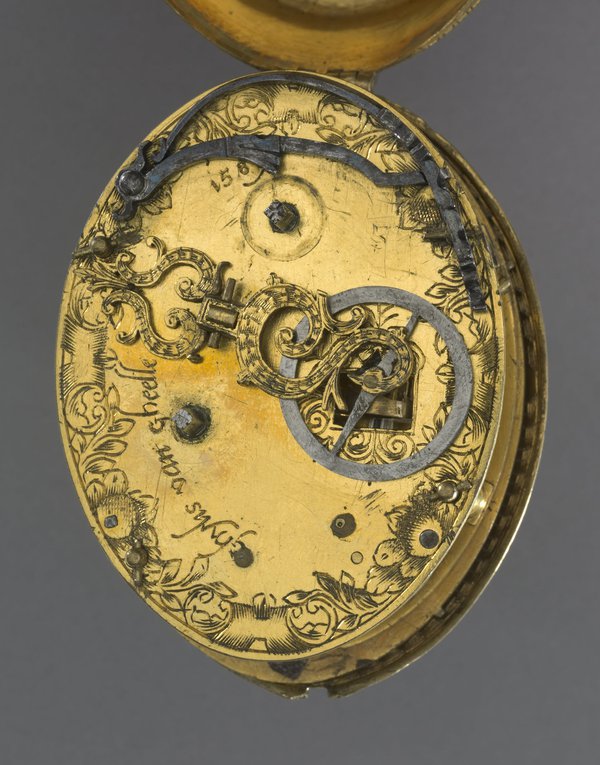
In late Elizabethan England what better way to show everyone just how wealthy and successful you were.
Power madness
This post was written by Oliver Cooke
In a previous post I explained how mechanical clocks and watches work, with five elements – energy, wheels, escapement, controller and indicator. Let’s explore how some clocks and watches get their energy.
Mechanical clocks and watches employ kinetic energy, drawn from a built-in reserve – usually a mainspring (elastic potential energy) or a driving weight (gravitational potential energy). However, these need to be replenished, or wound-up.
We commonly wind-up a clock or watch directly, with kinetic energy from our muscles (which, before that, was chemical energy from our breakfast). In an automatic watch, a moving weight spins and winds it up as we move around.
In c.1765, James Cox made a clock that is wound by changes in atmospheric pressure. Similar is the Atmos clock, which has gas-filled bellows which expand and contract with changes in the surrounding air temperature and pressure – this movement winds the spring in the clock. This has been a very successful design – it was first introduced in 1928 and it is still being made. There was even a mechanical clock made to be powered by by an artificial heat source (see image).

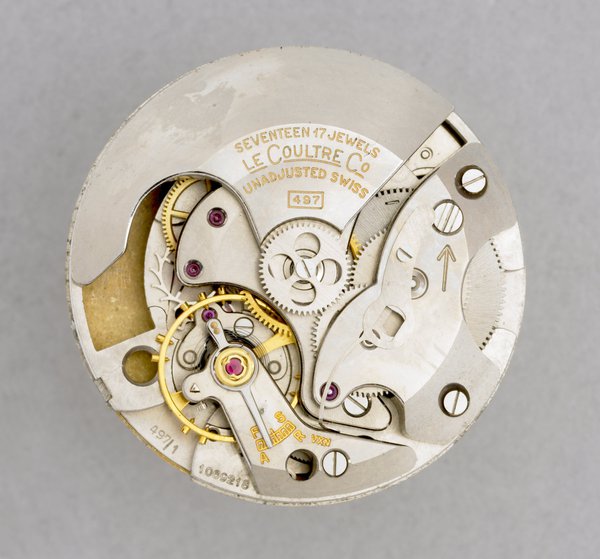
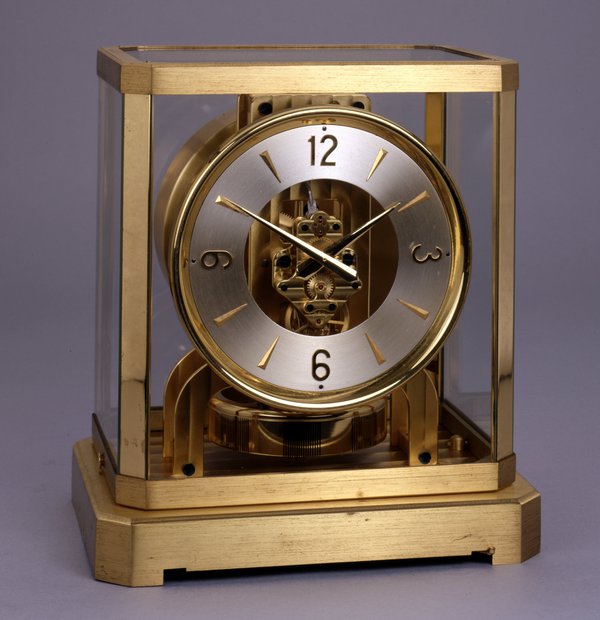



Electrical clocks and watches employ electrical energy. We might provide this by putting in a fresh battery (which is a reserve of chemical potential energy), although sometimes the battery is rather larger than the clock it powers!
Mains powered clocks often do not have a built-in energy reserve and so these are reliant on a continuous supply to keep going. Solar powered clocks and watches use solar panels to convert light to electricity, which then charges a battery – this reserve is essential as the power source is not reliable – e.g. day and night.
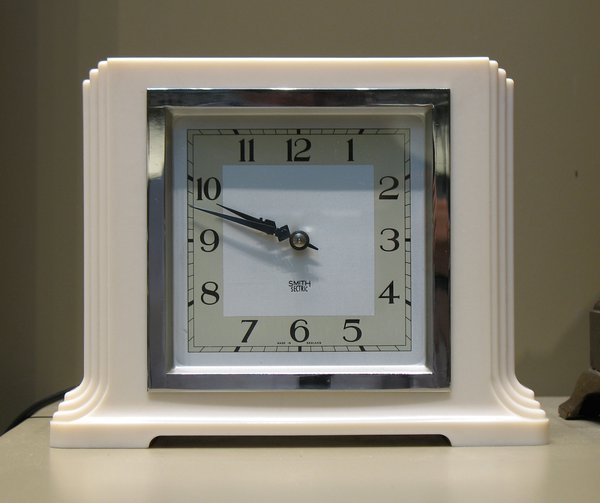
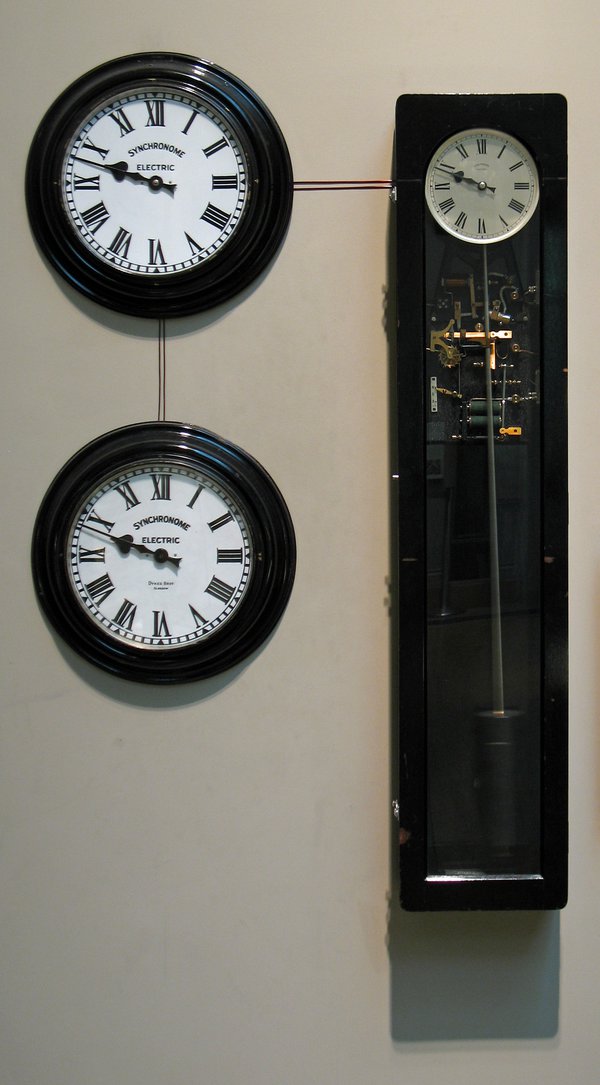
So, those are a few examples of how clocks and watches can obtain the energy they need. Of all the types of energy I can think of, only sound and atomic energy have not been not used to directly power clocks and watches. As to how they exploit the energy… well that is another story altogether… maybe for a later post!
It’s for the birds
This post was written by James Nye
Some pigeon racers were cheats. This was the shocking brief given to the Skymaster Clock team in the 1950s when refining their latest patent racing clock.
It was a serious business for the 100,000 registered pigeon fanciers in Britain, and rigid standards were enforced. Defeating the few cheats involved some inspired horology, and when I heard how clever the solution was, I wanted to share it here. But first, let’s understand the basics.
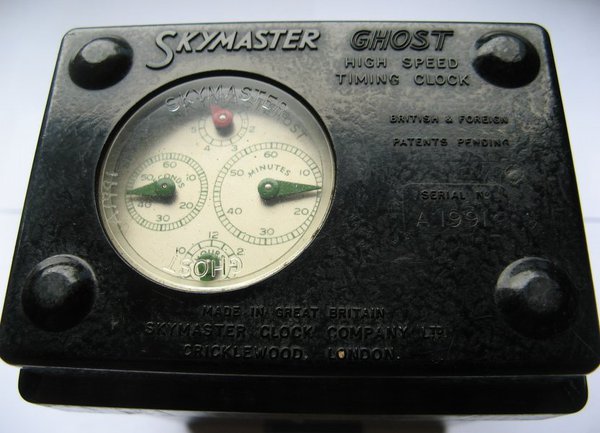
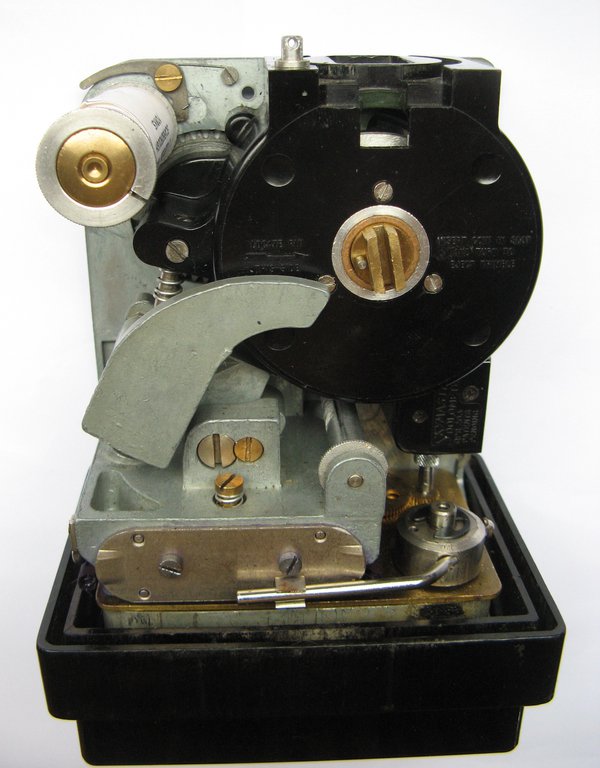


The Skymaster clock contains a 7-jewelled platform escapement movement, coupled to an inked ribbon stamping mechanism (like a time-recorder) which presses a paper tape against an internal mirror image dial (in relief), recording the time a returning pigeon’s identifying ring is inserted.
Races are won by seconds. Pigeon clocks are meticulously checked and every option to cheat is blocked. But unscrupulous fanciers had come to believe that platform escapement clocks could have their rates meaningfully altered, for example by swinging the clock in the same plane as the balance, so that they might both retard the locked clock (ideal before the pigeon arrives) and advance it (needed once the pigeon is back) to get it back to time before being examined by an official.
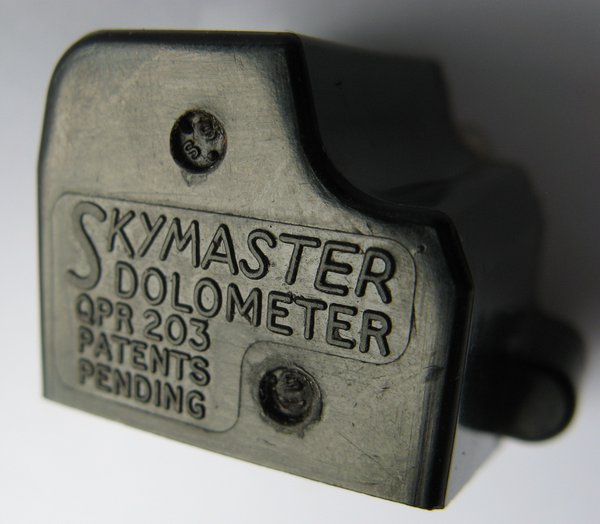
The effectiveness of these methods is uncertain but, nevertheless, Eric Moss and Bruce Alexander of Smiths were compelled to devise a brilliant solution for the Skymaster – called the ‘Dolometer’. They based it on an electro-mechanical car clock, in which typically an inverted-Sully escapement (electrically driven) advances the train. See an animation here. They removed the magnetic drive, and relied on the overall motion of the clock to drive the Dolometer – thus the dial reveals the degree of any shaking.

Calibrate for ‘normal’ activity (the natural joggling of a journey home to the loft, plus a margin for error) and if the Dolometer shows an excess, you have detected a naughty pigeon fancier’s attempted fraud. Bruce Alexander carried a dolometer for days – even cycled with it – to work out what a normal reading would be.
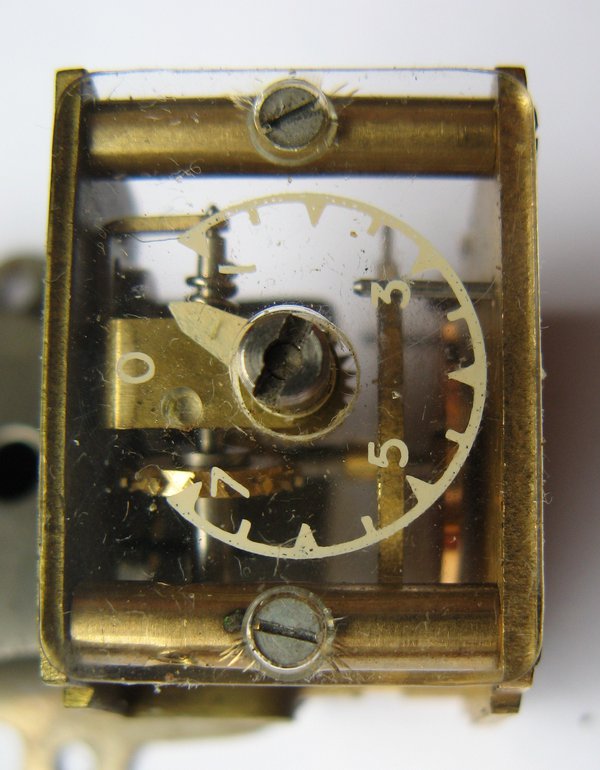
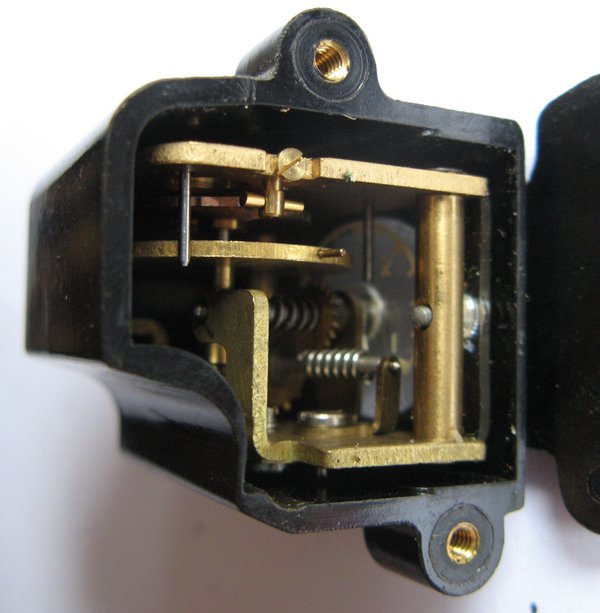
This seems to me to have been inspired thinking on the part of the designers. And it inspired me to acquire a Skymaster so that I could dismantle and photograph it for you.